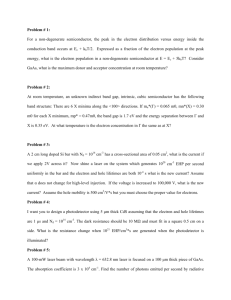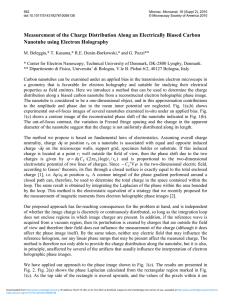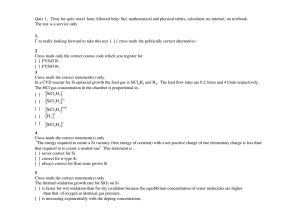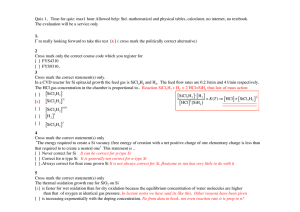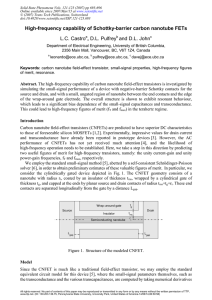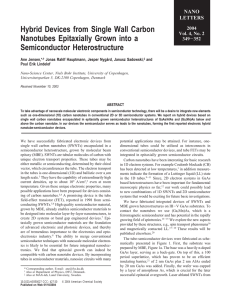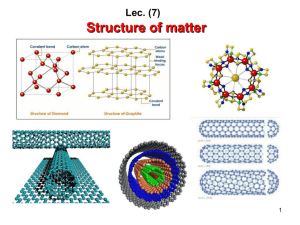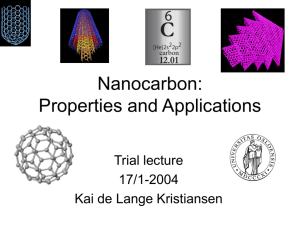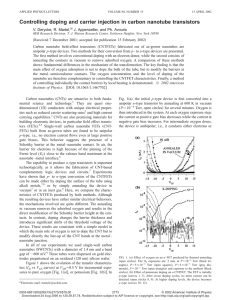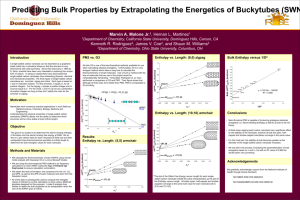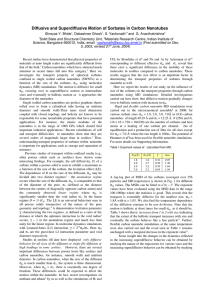Homework 4
advertisement
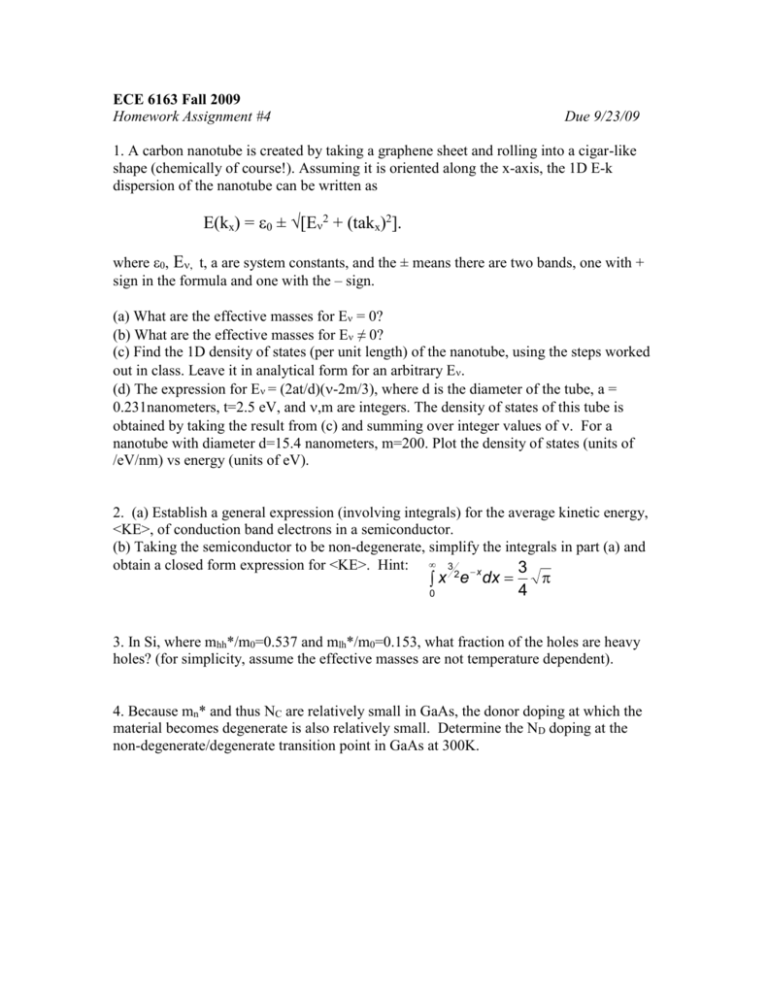
ECE 6163 Fall 2009 Homework Assignment #4 Due 9/23/09 1. A carbon nanotube is created by taking a graphene sheet and rolling into a cigar-like shape (chemically of course!). Assuming it is oriented along the x-axis, the 1D E-k dispersion of the nanotube can be written as E(kx) = 0 ± √[E2 + (takx)2]. where 0, E t, a are system constants, and the ± means there are two bands, one with + sign in the formula and one with the – sign. (a) What are the effective masses for E = 0? (b) What are the effective masses for E ≠ 0? (c) Find the 1D density of states (per unit length) of the nanotube, using the steps worked out in class. Leave it in analytical form for an arbitrary E. (d) The expression for E = (2at/d)(-2m/3), where d is the diameter of the tube, a = 0.231nanometers, t=2.5 eV, and ,m are integers. The density of states of this tube is obtained by taking the result from (c) and summing over integer values of . For a nanotube with diameter d=15.4 nanometers, m=200. Plot the density of states (units of /eV/nm) vs energy (units of eV). 2. (a) Establish a general expression (involving integrals) for the average kinetic energy, <KE>, of conduction band electrons in a semiconductor. (b) Taking the semiconductor to be non-degenerate, simplify the integrals in part (a) and obtain a closed form expression for <KE>. Hint: 3 x 3 x 2e dx 0 4 3. In Si, where mhh*/m0=0.537 and mlh*/m0=0.153, what fraction of the holes are heavy holes? (for simplicity, assume the effective masses are not temperature dependent). 4. Because mn* and thus NC are relatively small in GaAs, the donor doping at which the material becomes degenerate is also relatively small. Determine the ND doping at the non-degenerate/degenerate transition point in GaAs at 300K.




![Description This tool runs the model described in Ref. [1] below. It](http://s3.studylib.net/store/data/007555824_1-2f0124cd3aa95426766ad7b8bcd713b0-300x300.png)


